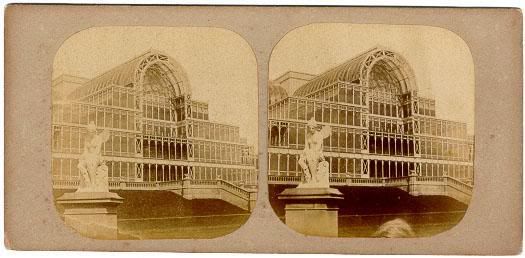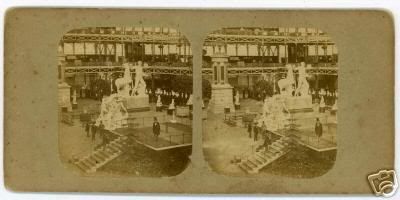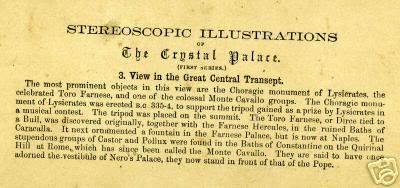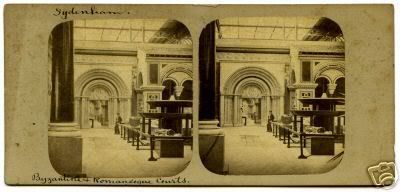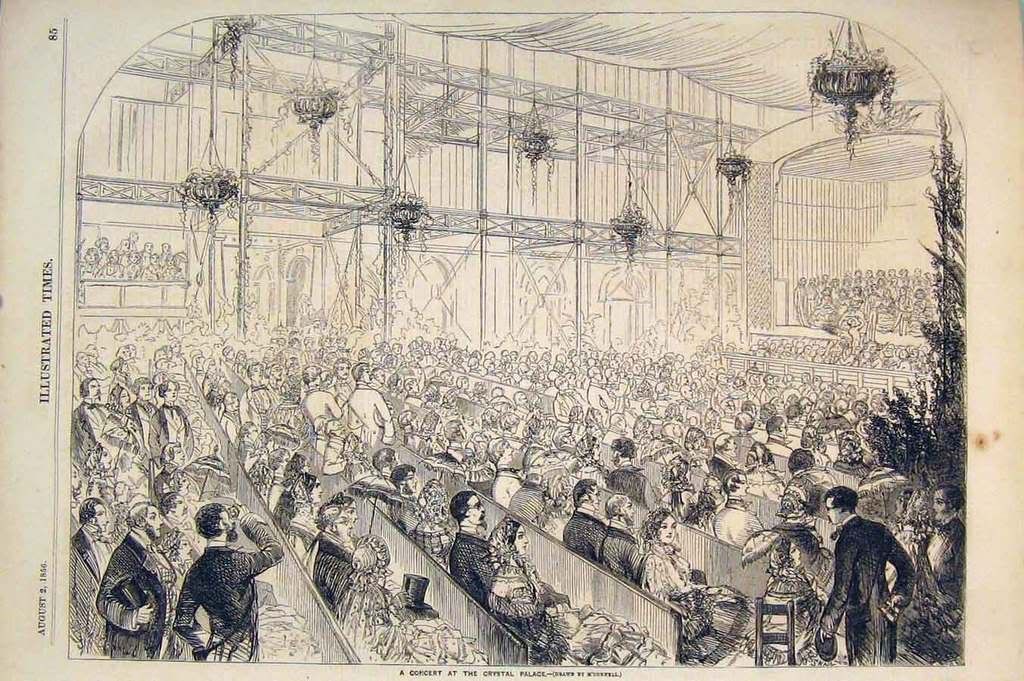London Stereocopic Company
54 Cheapside
and
313 Oxford Street
THE CRYSTAL PALACE, SYDENHAM,
Shewing the various Courts and points of greatest interest, with descriptive letter-press at the back of each slide.
The above subjects can be had beautifully executed on Daguerreotype plates, at 8s. 6d. each. For beauty of tone and minute accuracy of detail, these slides are the finest ever issued.
The Second series of about 200 subjects taken from the Crystal Palace, in addition to and including many of the above, without description, mounted at 2s. each slide; on Glass 5s. each."

1. The Byzantine Court – Interior view, with the black marble fountain (an exact copy of the one at Heisterbach on the Rhine), and the celebrated effigies of Henry II, and his queen Eleanora, and of Isabella, wife of King John, from Fontrevault Abbey.

2. The Egyptian Court – Entrance to, with Avenue of Lions. The different styles of columns, &c., during the Ptolemaic period, about 300 years B.C., and the outlines in low relief on the walls are beautifully delineated.
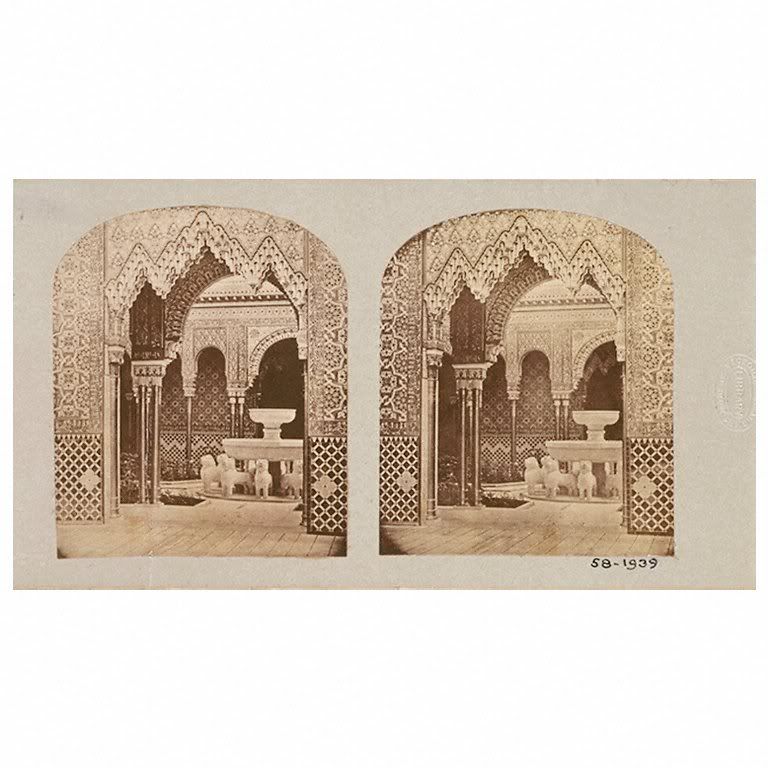
3. The Court of Lions – One of the most gorgeous in the Alhambra, remarkable for its graceful fretwork and the fairy-like slightness of its columns. It derives its name from the stone fountain seen in its centre, surrounded by lions.
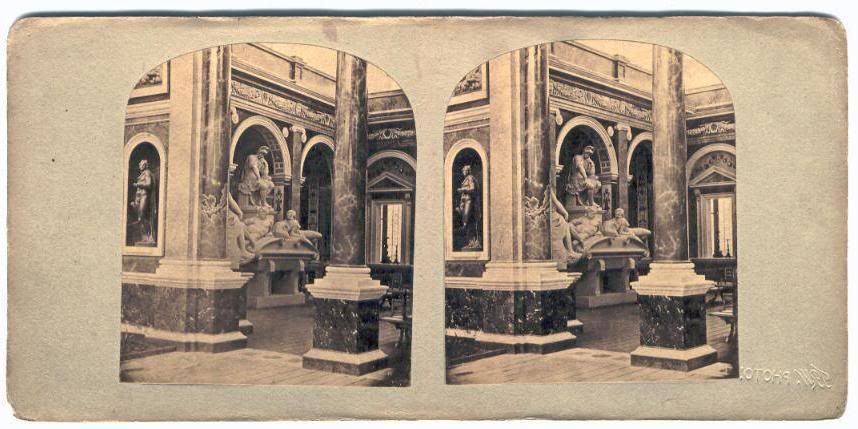
4. The Italian Court – From a portion of the Farnese Palace at Rome, with the figure of Lorenzo de Medici, and Dawn and Twilight, from the celebrated monument in the Church of San Lorenzo at Florence. [I have "unreversed" this image.]
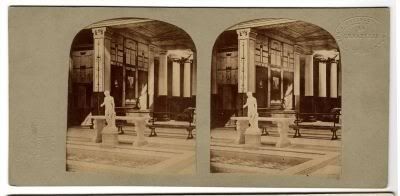
5. The Pompeian Court – A well chosen view from that beautiful Court, being an actual representation of the “Atrium,” or hall of a Roman mansion, with its “impluvium” at the time of the great eruption, A.D.79.
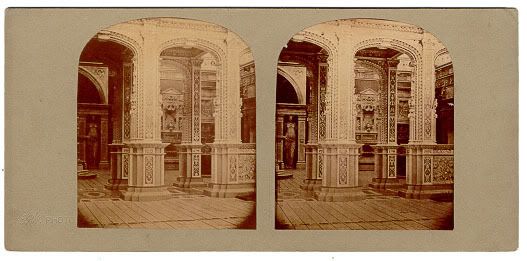
6. The Renaissance Court – A correct epitome of that architecture which superseded the florid Gothic of the 15th century, and returning to a chaster style, is now known as the Renaissance.
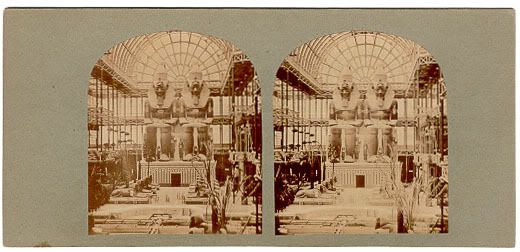
7. The Two Colossal Statues – of Rameses, from the Temple of Abou Simboul, in Nubia, sculptured in the solid rock. From hieroglyphics in the interior the date of their construction is ascertained to have been 1560 B.C.
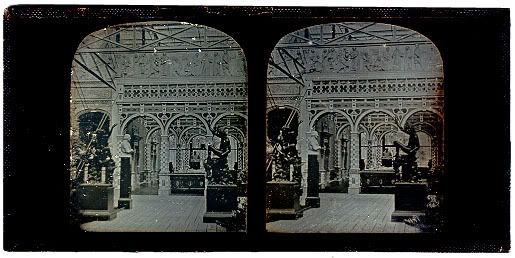
8. The Elizabethan Court – Both façade and arcades of which are from Holland House, Kensington, together with two bronze figures by Landini, from the Tartaghue fountain at Rome, and busts of Shakespeare, &c.

9. Entrance to English Mediaeval Court – Showing the western doorway of Tintern abbey, and the two statues from the west front of Wells Cathedral. The celebrated Walsingham Font is seen within the Court.
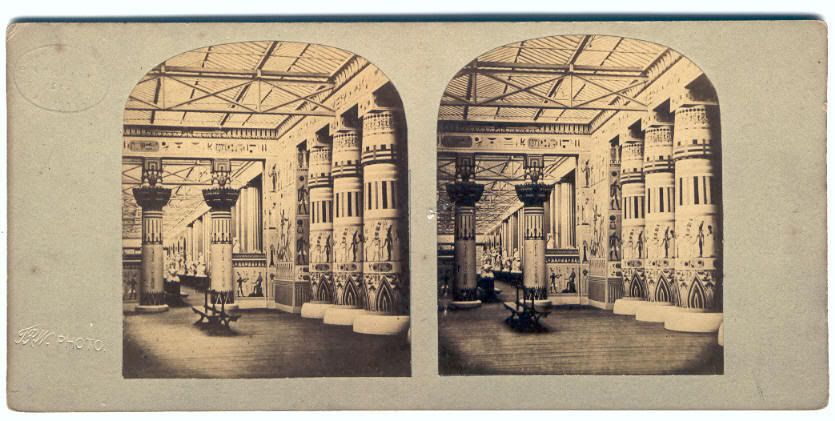
10. The Egyptian Hall of Columns – This Hall exhibits a combination of columns from various buildings; some from the tomb of Ozymandias, and others crowned with the head of Athor, the Egyptian Venus.

11. The Telescope Gallery – So named from the curious effect produced by its apparently interminable repetition of rings, when seen from either extremity.

12. The Assyrian Court – With representations of the human-headed bulls which formed the entrance to the palace at Khorsabad, and some of the figures on its walls, as also of the Sphinxes, cast from one in the Louvre, dated 1000 years before Christ.
13. View in the Greek Court – Containing some of the finest examples of Greek sculpture; a portion of the Egyptian Court is also visible, with one of the figures of Amenoph, restored from the black granite statue in the British Museum.
14. Entrance to the Egyptian Court – Remarkable for the dedication on the frieze, to the Queen, as the “Ruler of the Waves, the Royal daughter Victoria, Lady Most Gracious,” &c., in hieroglyphics.

15. Interior View of the Crystal Palace – Looking towards the north end, and comprising nearly the whole length of the nave. Osler’s crystal fountain occupies the centre of the foreground, surrounded by the colossal statues of Lessing and Huskisson, Lord Chatham, and Dr. Johnson.
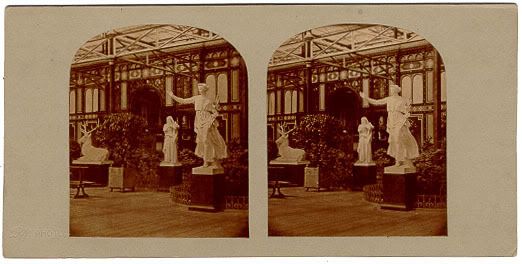
16. The Stationery Court – This view comprises three life-like figures by Rauch of Berlin, pupil of Canova and Thorwaldsen. The character of the Court is Composite, with cinque-cento ornamentation.

17. Gallery of Greek Sculpture – The statues seen in this view are of different periods of Greek art, but all of the highest class, from the collections at Rome, Naples, Paris, and Berlin.

18. Gallery of Greek Sculpture – A continuation of the preceding, and comprising statues and busts in no way inferior to it in any of the qualities of high and refined art.
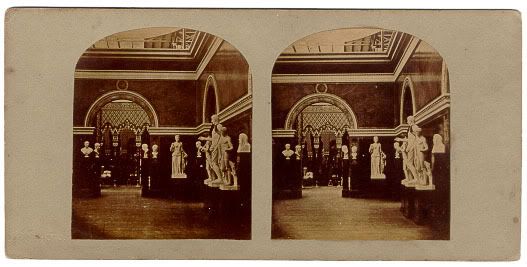
19. Gallery of Greek Sculpture – Remarkable principally for the authenticated busts of Numa Pompillius and various Roman Emperors, clustered round the termination of the gallery looking towards the Court of Lions. [I know, I know, this is in fact the Roman Court. Just proves you can't trust what you read!]
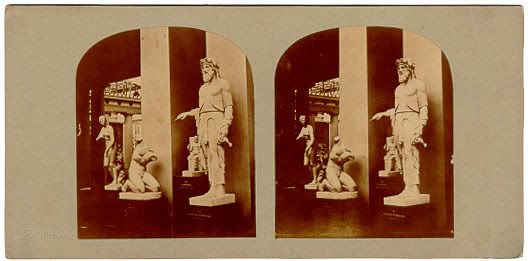
20. Gallery of Greek Sculpture – Amongst the statues in this continuation of the Greek Court, is the far-famed Venus de Medici, and it is remarkable for the massive antae or square columns, in the recess between which is a small statue of Euripides.
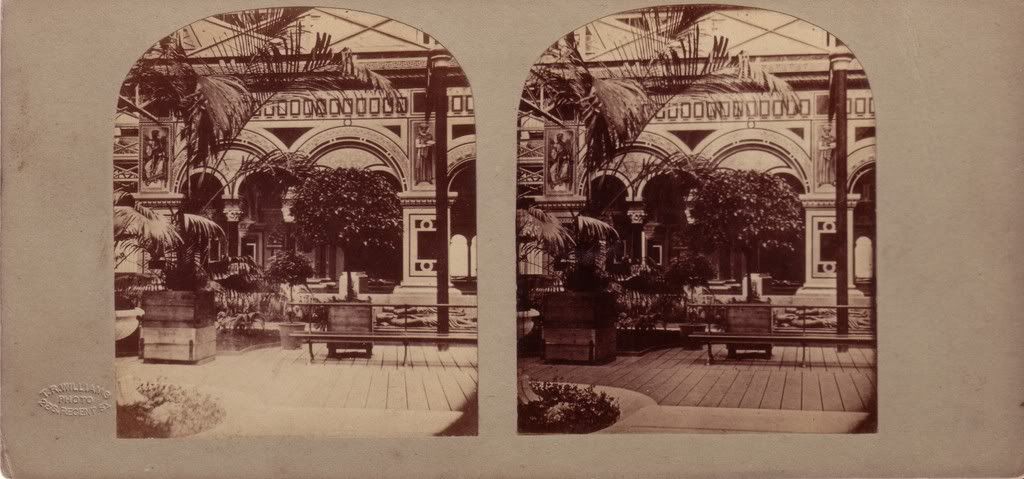
21. The Byzantine Court – Two arches of the arcade from the cloisters of St. Mary in the Capitolo, an ancient Church of the Cologne, with examples on the spandrels of the costume and style of the Byzantine period, and recumbent figures of the Earls of Pembroke and Essex.
22. The Byzantine Court – A continuation of the same façade, with portraits of the Emperor Nicephorus and of Theodora, wife of Justinian.
23. The Italian Court – Constructed after the model of the Farnese palace with the statue of Guiliano de Medici, and the figures of Light and Night, from San Lorenzo, Florence. In the centre is seen the fountain of the Tartarughe, from Rome.
24. The Italian Court – The original design of the Farnese Palace, the model from which this Court is taken, was by Sangallo, but it was completed under the direction of Michael Angelo; by whom is the celebrated statue of Bacchus, seen in front of the façade.
25. English Mediaeval Court – Part of which is from Tintern Abbey, and part form Gainsborough, Yorkshire, with statues from Wells Cathedral and Romsey.

http://cgi.ebay.co.uk/ws/eBayISAPI.dll? ... :IT&ih=023
26. Entrance to the Greek Court – Presenting tow columns from the Temple of Jupiter, at Nemea, and in the back ground a model, about one-fourth the size of the original, of the Parthenon, with antique statuary in the foreground.
27. Interior of the Greek Court – Supported by pillars from the Temple of Jupiter, at Nemea, constructed about 400 years B.C. Here are the two famous statues, the gladiator Repellens, and the Scythian whetting his knife.
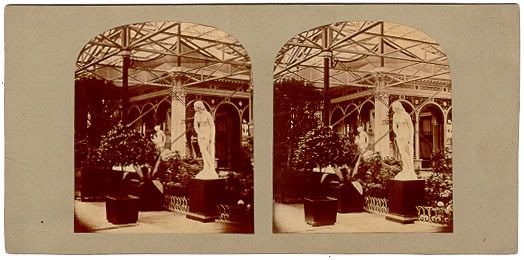
28. Mixed Fabrics Court – In the occupation of Sowerby, of Regent Street; at this angle is seen Bailey’s Graces, and the Musidora by Thomas.
29. The Roman Court – Nothing can be more chaste and simple than this Court, its arches rising between Ionic pillars and separated by a pilaster of the same order, in harmony with the sculpture it contains.

30. The Statues of Amenoph – Restored from the original in black granite, now in the British Museum, together with a portrait of Rameses II. sitting under the Persea tree, sculptured on the walls.

31. The Interior of English Mediaeval Court – Most conspicuous in the centre of this Court is the tomb of Edward the Black Prince, from Canterbury Cathedral, and that of William of Wykeham, from Winchester, beyond which is the Walsingham Font.
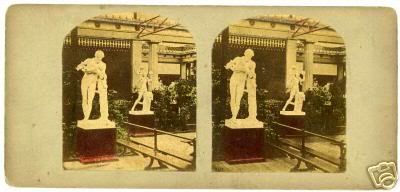
http://cgi.ebay.co.uk/1850s-Crystal-Pal ... dZViewItem
Ends 13-Feb-08 21:15:43 GMT
32. Middle Entrance to the Greek Court – Showing a Doric column, part of the façade from the Temple of Jupiter, at Nemea.
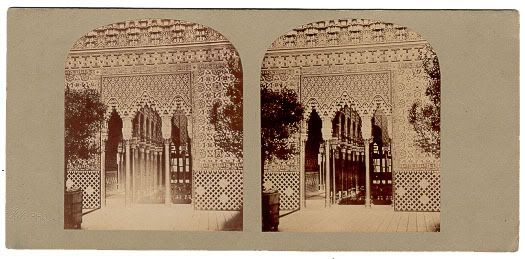
33. Entrance to the Alhambra – An exact facsimile of the entrance into the court of the Lions from the Court of the Fish-pond. The diaper pattern on the walls being from the Sala de la Barca.
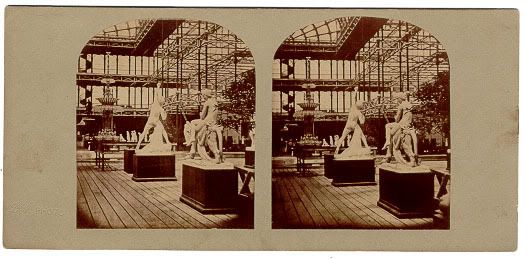
34. The Nave – Osler’s well-known fountain, Una and the Lion, and the Eagle Slayer, are here seen in a line across the nave, beyond which are the statues of Charles I. and James II.

35. Screen of the Kings and Queens of England – A beautiful representation of the Screen designed by M.D. Wyatt, with the sculpture by Thomas; it is taken from the angle where the Norman series commences, and comprises the statue of her present Majesty.

36. The Musical Instrument Court – A truthful representation of the entrance of this beautiful Court, designed by Thomas, with a representation of Miriam in the space above, and a bust of Jubal to the right.
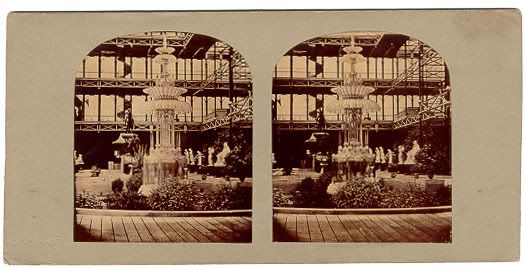
37. View in the Nave – This view is taken directly across the nave, in a line with Osler’s fountain and the statues of Charles I. and James II., and showing a line of statues by Theed and Gibson, amongst which most conspicuous is that of Humphrey Cheetham, of Manchester.
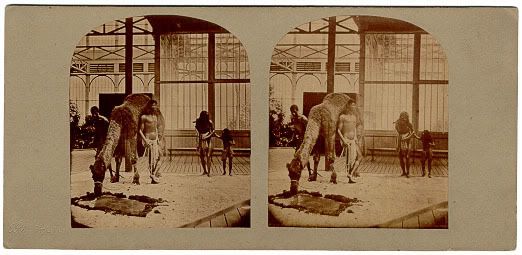
38. Group of Africans – Contrasting the Negro of the lower levels with the Danakil of the high pastures and plateaus of the Desert.

39. Byzantine Court – Showing the centre arch of the façade from the Church of St. Mary in Capitolo, at Cologne, the columns from which it springs being ornamented with capitals of different designs.
40. Mixed Fabrics Court – The only statue visible from this point of view, is from the Murder of the Innocents, but it derives its interest from the tropical evergreens, by which it is surrounded.
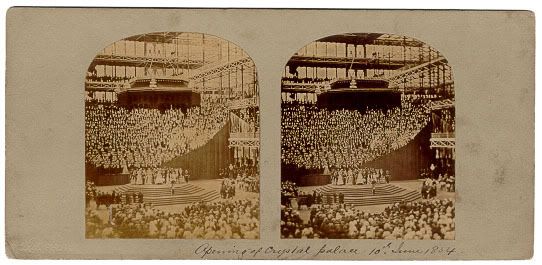
41. Ceremony of Inauguration – Being a correct representation taken upon the spot on the 10th of June, when Mr. Laing, the Chairman of the Crystal Palace Company, was in the act of reading the address to Her Majesty.
42. Mixed Fabrics Court – Showing the Tired Hunter, a statue by Bailey, and Apollo discharging his bow, by the same artist.
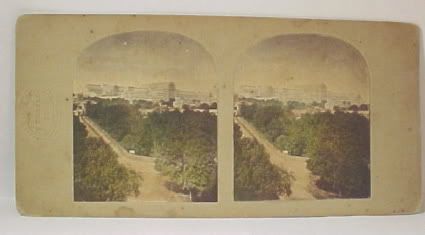
43. General View of the Crystal Palace – A beautiful view of the building seen from a distance. It is taken from a point above Anerley station, where it is seen to the greatest advantage.
44. Portion of the North Wing – In which the character of the Italian Terraces with the vases, statues, and flower-beds, fish-ponds, &c., is seen in connection with a portion of the building.
45. General View in the Grounds – As seen from the central corridor, comprising the broad walk down to the central fountain, the village and church beyond the grounds, and hills and variegated landscape in the far distance.
The above subjects can be had beautifully executed on Daguerreotype plates, at 8s. 6d. each. For beauty of tone and minute accuracy of detail, these slides are the finest ever issued.
The Second series of about 200 subjects taken from the Crystal Palace, in addition to and including many of the above, without description, mounted at 2s. each slide; on Glass 5s. each."
Note. I am not convinced that the additional 200 views were ever published. There is an almost identical format of stereoview mounts, using the same typeface, with "First Series" and "Second Series." . I wonder if they are evidence of the overlap of Thomas Richard William's work being published by Negretti & Zambra and the London Stereoscopic Company.




